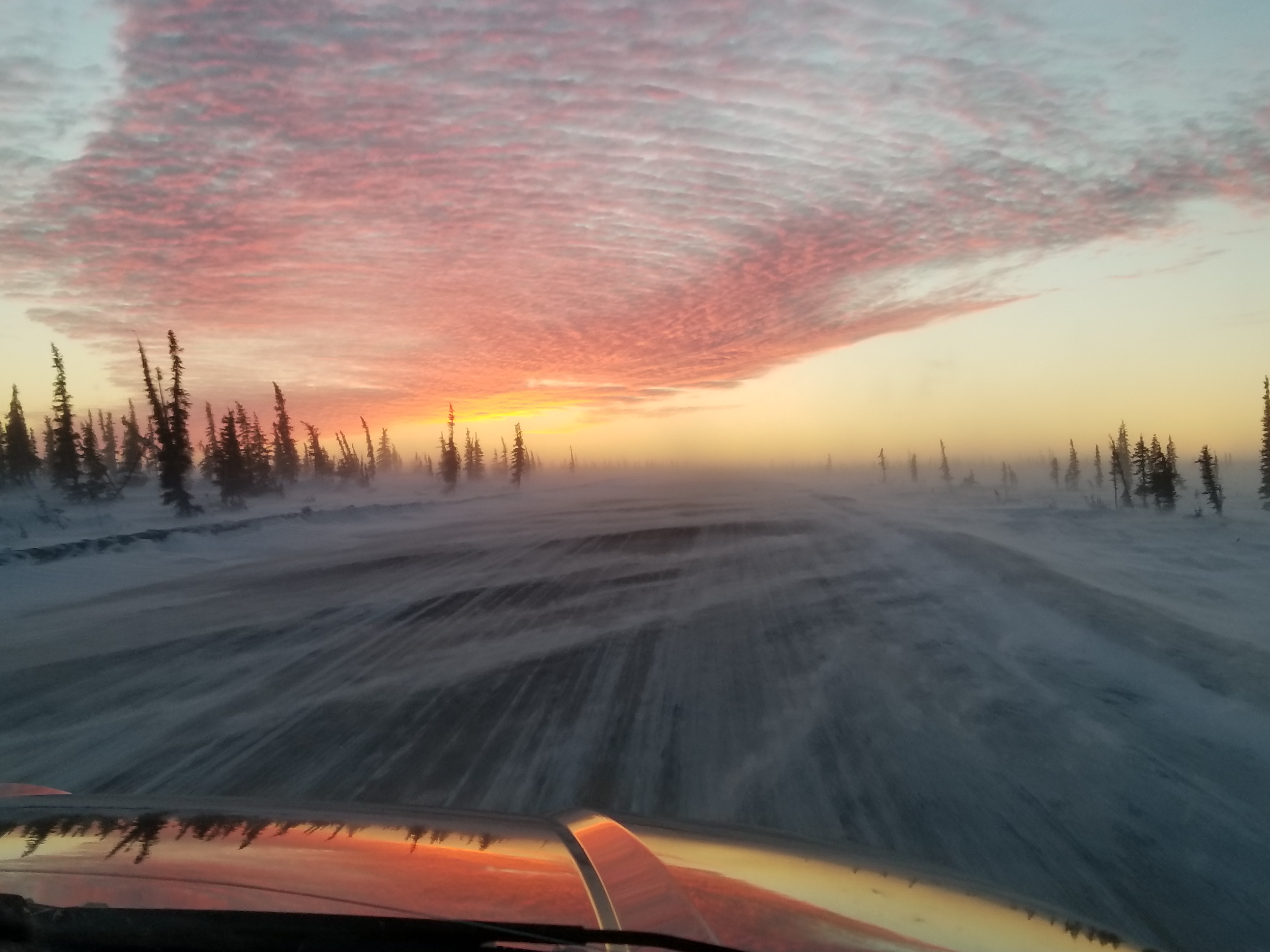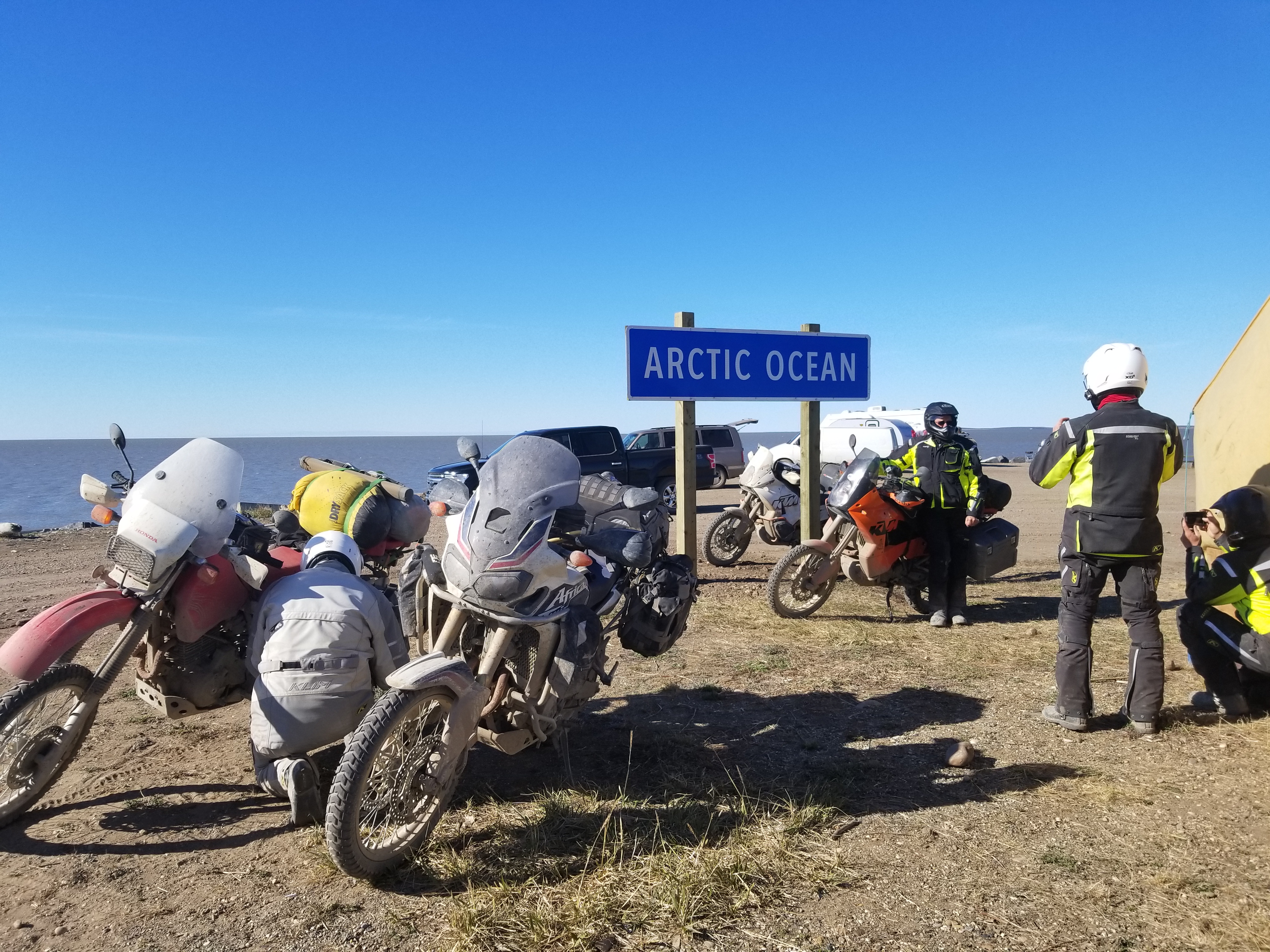How a highway to the Arctic Ocean is changing a corner of Canada’s Arctic
A the Inuvik-Tuktoyaktuk Highway approaches its two-year anniversary, tourism continues to grow — but the future remains uncertain.

Nearly two years after it opened in Canada’s northwest corner, the only public highway to the Arctic Ocean in North America is seeing a spike in tourism — though the economic development it promises has been slower to develop.
Located in the Northwest Territories at the terminus of the Dempster Highway, the Inuvik-Tuktoyaktuk Highway (or ITH) stretches from Inuvik north to the Beaufort Sea community of Tuktoyaktuk, or Tuk. After $300 million in construction costs, four years of building, and decades of consideration, the 138-kilometer (roughly 85-mile) highway officially opened on November 15, 2017.
The highway’s completion means that, for the first time ever, motorists can drive themselves from the continental road system to the shores of the Arctic Ocean. (Alaska’s Dalton Highway, which links U.S. and Canadian road systems to the oil fields of Prudhoe Bay is popular for road trips, too, but there’s no public access to the ocean.)
Inuvik, where the new highway begins, has seen up to 50 percent more visitors than in previous years. For a community of 3,200, the increase has been “staggering,” according to officials at the Government of the Northwest Territories.
Meanwhile at the northern terminus of the highway, Tuktoyaktuk has also seen an influx of tourism. In 2018, the first summer that the highway was open, officials there estimated that 30-50 vehicles were traversing the highway north each day. For a community of 900, this many visitors has meant a booming tourism business, resulting in completely booked bed and breakfasts throughout town, a newly-opened visitor center, and even the opening of the community’s first restaurant since 2007, according to a CBC report.
But while tourism has expanded rapidly in both Inuvik and Tuktoyaktuk and is anticipated to grow further, business growth has been slower to follow suit. “I think there is a lag effect with people opening businesses” said Minerva Ward, Regional Tourism Development Officer for the Beaufort Delta Area. “People need to see the business opportunities on their door in order for them to actually start businesses,” she said of local business growth. “For example, in Tuk, many businesses have started late in the summer once they saw the need in person.”
Though business growth may be slow, both Inuvik and Tuktoyaktuk are working to increase tourist attractions and local engagement opportunities for visitors. Inuvik has organized musical performances in a local park, markets, and other events across the community, says Ward. In preparation for more incoming visitors, Tuktoyaktuk installed benches, picnic tables and interpretative signage across the town, invested in tourism development staff — and even constructed a traditionally decorated sod house, according to the Canadian Northern Economic Development Agency.
Thought it’s often being hailed as a project to increase tourism in the north of the Northwest Territories, the highway has a more complex history. It was originally conceived to offer better access to oil and gas resources in the Northwest Territories and Arctic Ocean. Though construction of the highway with this intent finally began in 2014, a five-year moratorium on offshore oil and gas development announced in 2016 halted these plans.
“With the oil ban we will not be using the road for its primary use, which is the oilfields of the Beaufort [Sea],” said Darrel Nasogaluak, mayor of Tuktoyaktuk at the time of the moratorium announcement.
With construction already underway when the moratorium was announced, the Inuvik-Tuktoyaktuk Highway’s purposes have changes. And though some have questioned whether the highway’s price tag was worth it without oil and gas access, officials believe it will lower the cost of living, education, and healthcare; and the new infrastructure has lowered transportation costs for those in the region.
Though tourism is expected to grow in Inuvik and Tuktoyaktuk, the future of the highway is far from fixed. If the five-year offshore drilling moratorium expires on schedule in 2021, it could again become a route for oil and gas development. According to some, gas pipeline development in the region remains as an opportunity.
But for now, the novelty of North America’s first public highway to the Arctic Ocean remains its biggest attraction — drawing tourists from Canada and beyond.

